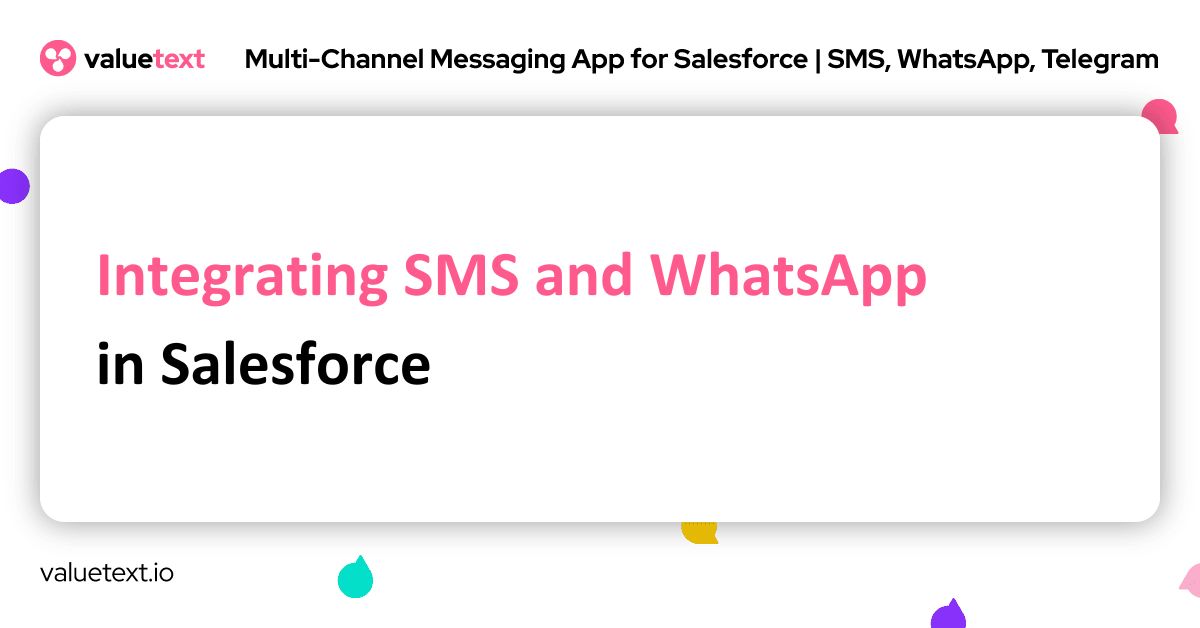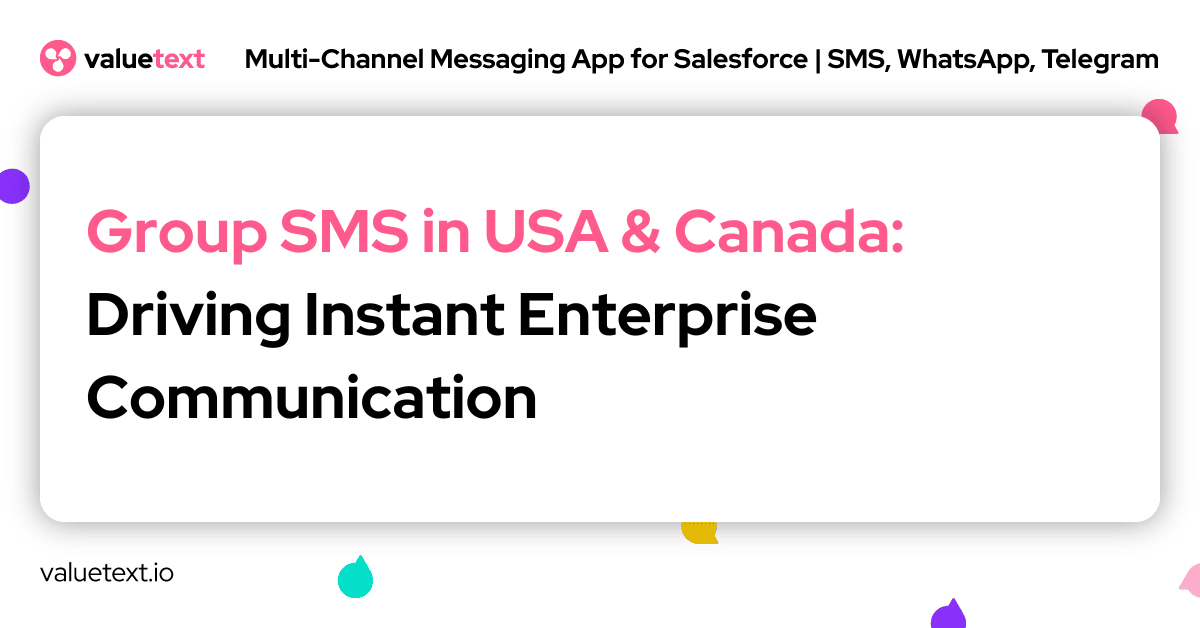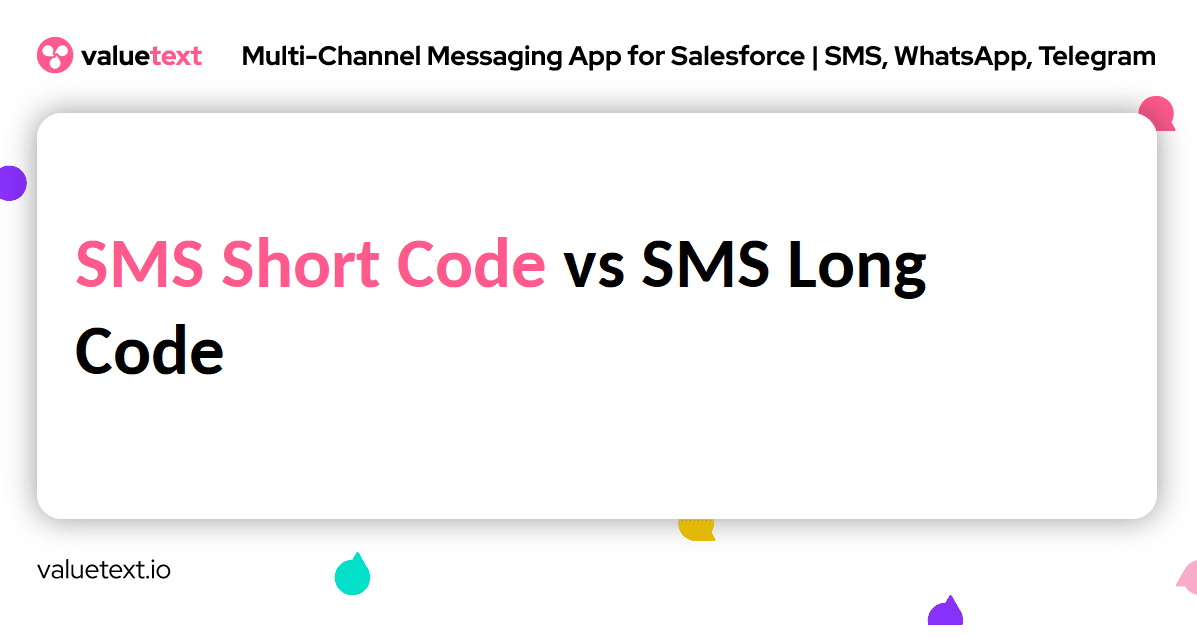07 Aug

Elevating Business Communication and Customer Engagement
Leveraging multiple communication channels ensures that businesses can reach their customers wherever they are. Integrating SMS and WhatsApp in Salesforce provides a robust, unified communication strategy that enhances customer engagement and operational efficiency. This blog explores the benefits and implementation of SMS and WhatsApp integration in Salesforce, focusing on the innovative fallback channel mechanism.
Table of Contents
- Introduction
- The Power of SMS and WhatsApp
- Benefits of Integrating SMS and WhatsApp
- Fallback Channel Mechanism
- Implementing SMS and WhatsApp Integration in Salesforce
- Conclusion
- Contact Information
The Power of SMS and WhatsApp in Salesforce
SMS and WhatsApp in Salesforce allow businesses to streamline their communication processes by consolidating these powerful messaging platforms into a single CRM system. Salesforce, known for its customer relationship management capabilities, becomes even more potent with the integration of SMS and WhatsApp, enabling real-time, personalized communication with customers.
Key Features:
- Seamless Integration: Effortlessly merge SMS and WhatsApp communication.
- Real-Time Messaging: Send and receive messages instantly across both platforms.
- Centralized Data: Store all communication records within Salesforce for easy access and management.
- Automated Workflows: Create automated messaging workflows to enhance efficiency.
Benefits of Integrating SMS and WhatsApp in Salesforce
Enhanced Customer Reach
Multiple Channels:
Reach customers through their preferred communication channels. Some customers may prefer SMS for its simplicity, while others may favor WhatsApp for its rich media capabilities.
Higher Engagement Rates:
With the combined power of SMS and WhatsApp, businesses can achieve higher engagement rates as messages are more likely to be seen and responded to promptly.
Streamlined Communication
Unified Messaging:
By integrating SMS and WhatsApp into Salesforce, businesses can manage all customer communications from a single platform. This unification simplifies the communication process and reduces the chances of missed messages.
Consistent Messaging:
Ensure consistent messaging across both platforms, maintaining a cohesive brand voice and improving customer trust.
Improved Efficiency
Automated Responses:
Leverage Salesforce’s automation capabilities to send automated responses based on predefined triggers. This ensures timely communication and reduces manual effort.
Data-Driven Insights:
Analyze communication data within Salesforce to gain insights into customer behavior and preferences, enabling more informed decision-making.
Fallback Channel Mechanism
One of the standout features of integrating both channels in Salesforce is the fallback channel mechanism. This feature ensures that critical messages are delivered even if one communication channel fails.
How It Works:
- Primary Channel Attempt:
The system first attempts to send a message via the primary channel (e.g., WhatsApp). - Fallback Channel Activation:
If the message fails to deliver or is not read within a specified time frame, the system automatically sends the message through the fallback channel (e.g., SMS). - Guaranteed Delivery:
This mechanism ensures that messages are delivered reliably, increasing the likelihood that important communications are received and acted upon.
Benefits of Fallback Mechanism:
- Increased Reliability:
Ensures critical messages are not missed due to technical issues or platform preferences. - Enhanced Customer Experience:
Provides a seamless communication experience by ensuring message delivery through the most effective channel. - Operational Continuity:
Maintains communication flow even during platform downtimes or disruptions.
Implementing SMS and WhatsApp Integration in Salesforce
- Evaluate Business Needs: Identify the communication needs of your business and determine how integrating SMS and WhatsApp can address these requirements.
- Choose the Right Tools: Select integration tools or apps that seamlessly connect both channels Salesforce. Consider options that offer robust features and reliable support.
- Set Up Integration: Follow the integration process to connect SMS and WhatsApp with your Salesforce environment. Ensure that all necessary configurations are completed for smooth operation.
- Configure Fallback Mechanism: Set up the fallback channel mechanism to ensure reliable message delivery. Define the rules and triggers for activating the fallback channel.
- Train Your Team: Provide comprehensive training to your team on using the integrated system. Ensure they understand how to manage communications and leverage the fallback mechanism effectively.
- Monitor and Optimize: Continuously monitor the performance of your integrated communication strategy. Use analytics to track engagement and delivery rates, and optimize your approach based on insights gained.
Conclusion
Integrating SMS and WhatsApp in Salesforce is a game-changer for businesses aiming to enhance their communication strategy. This integration not only improves customer engagement and operational efficiency but also ensures reliable message delivery through the innovative fallback channel mechanism. By leveraging the combined power of SMS and WhatsApp within Salesforce, businesses can achieve a unified, effective communication strategy that drives success.






